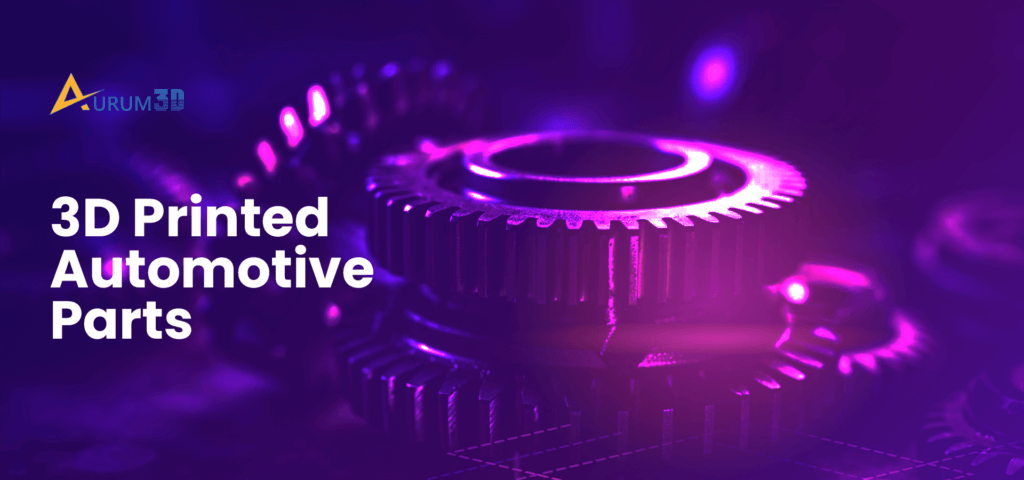While producing automotive parts, companies involved in motor vehicle manufacturing have the option to choose between additive manufacturing and subtractive manufacturing. Subtractive manufacturing methods produce automotive parts by removing unnecessary material successively from a block.
Engineers remove unnecessary material in various ways – cutting, drilling, boring, milling, grinding, turning, and machining. On the other hand, additive manufacturing or 3D printing produces automotive parts by adding material layers successively.
Engineers produce automotive parts using a variety of 3D printing machines and materials. For instance, they use plastic, resin, or metal 3D printing technologies according to the usage and needs of individual automotive parts.
Top car companies and manufacturers have already switched from subtractive manufacturing to additive manufacturing. Large and multinational companies further 3D print various parts by investing in in-house and large-scale 3D printing facilities.
At the same time, many companies and startups have built a reputation by producing complex and custom 3D printed automotive parts for corporate customers across regions. There are a slew of reasons why most automotive companies these days prefer 3D printed parts to producing parts.
11 Reasons Why Top Car Companies Opt for 3D Printed Automotive Parts
Design Flexibility
Conventional manufacturing techniques support specific shapes. They ensure the design freedom required by engineers to produce automotive parts with complex geometries. 3D printers produce automotive parts from digital 3D models created using CAD software. Also, engineers can use the appropriate 3D printer to convert the digital file into a solid automotive part without any design constraints.
Seamless Customization
Personalization is one of the hottest trends in the automotive industry. Leading automotive companies invest in R&D to produce parts that boost customer experiences and outperform competitors. 3D printing technologies create opportunities for engineers to produce custom parts according to the preferences of individual customers. Engineers can use 3D printers to produce custom parts like body panels, clutch parts, transmission parts, and accessories in hours.
Rapid Prototyping
Rapid prototyping is one of the important use cases of 3D printing across industries. Engineers can use 3D printers to produce functional components of vehicles for testing and evaluation processing. Also, they can update the prototype regularly according to test results. Hence, it becomes easier for automotive companies to produce new and customized automobile parts in a short amount of time.
Weight Reduction
The overall weight of a car directly impacts its fuel efficiency and performance. Manufacturers explore ways to boost energy efficiency by reducing the weight of a vehicle. Engineers can produce parts using lightweight 3D printing materials like titanium and polypropylene. Hence, they can facilitate vehicle weight reduction by producing 3D-printed automotive parts.
On-Demand Production
Engineers can use a 3D printer to produce automotive parts directly from a CAD model. They can deliver 3D-printed parts in a short amount of time. Many 3D printing service providers print and deliver custom parts to automotive companies in about 3 days. The on-demand production helps automotive companies to produce parts remotely without depending on the supply chain.
Vintage Car Spare Parts Supply
The latest statistics posted on Statista suggest a surge in demand for vintage cars and classic cars. 3D printing technologies help automotive companies produce spare parts for old cars without maintaining an inventory. Engineers can produce the required spare part in hours from its digital 3D model. Also, automotive companies can help customers produce 3D-printed spare parts by sharing the relevant STL files.
Extensive Material Options
Engineers these days produce automotive parts using different 3D printing types – plastic, resin, and metal. While using an FDM or FFF 3D printer, they can produce a part using a variety of thermoplastic filament materials and blends. Likewise, resin 3D printers enable them to produce automotive parts using several forms of standard and engineered resin.
At the same time, automotive companies can invest in robust metal 3D printing machines to produce strong, durable, and custom parts using a variety of metal alloys. The extensive material options make it easier for companies to produce and deliver parts with the desired functionality and features.
Material Waste Reduction
Unlike subtractive manufacturing methods, 3D printing technologies produce automotive parts by depositing material layer by layer. Hence, an automotive part is printed without using additional and unnecessary materials. Also, engineers have the option to recycle and reuse specific 3D printing materials. The reduction in material wastage helps companies produce 3D-printed parts in a cost-efficient way.
Supply Chain Challenges
Global automotive companies cannot boost customer experience without an efficient supply chain. However, they find it challenging to resolve recurring supply chain issues like overstocking inventories, enforcing quality control, safeguarding warehouses, and controlling logistics costs. They opt for 3D printed automotive parts to reduce supply chain dependence. They leverage 3D printing technologies to shorten supply chains by facilitating on-demand and low-volume production.
Cost Reduction
Automotive companies replace 3D printing with subtractive manufacturing to save time and money. They prefer 3D-printed automotive parts to save money by reducing material wastage, avoiding investment in expensive tooling, and facilitating on-demand production. Also, 3D printing makes it easier for them to increase revenue and acquire customers by bringing concept cars into life in a short amount of time.
Sustainability
Automotive companies find it challenging to attract customers and investors without promoting sustainability. Conventional manufacturing tools and techniques make it challenging for them to produce parts without impacting the environment. That is why; they leverage 3D printing technologies to become sustainable by reducing material wastage. Also, they protect the environment by experimenting with many organic and recyclable 3D printing materials.
Conclusion
3D printing technologies create opportunities for automotive companies to become a part of Industry 4.0 by reducing production time and costs. Engineers can reduce the time and costs required to 3D print parts by combining the appropriate 3D printing machine and material.
Also, car companies can produce 3D printed automotive parts effortlessly by availing of plastic, resin, or metal 3D printing services. Hence, the production of 3D printed automotive parts will remain one of the most noticeable use cases of additive manufacturing technologies in the automotive industry.
About Aurum3D
We are amongst the major 3D printing service providers in Bangalore, India. We have been providing FDM, SLA and SLS custom 3D Printing services to many major industries including aerospace and automotive engineering. Please feel free to get in touch with us for your custom needs, our 3D printing solutions experts will get back to you within one business day.

